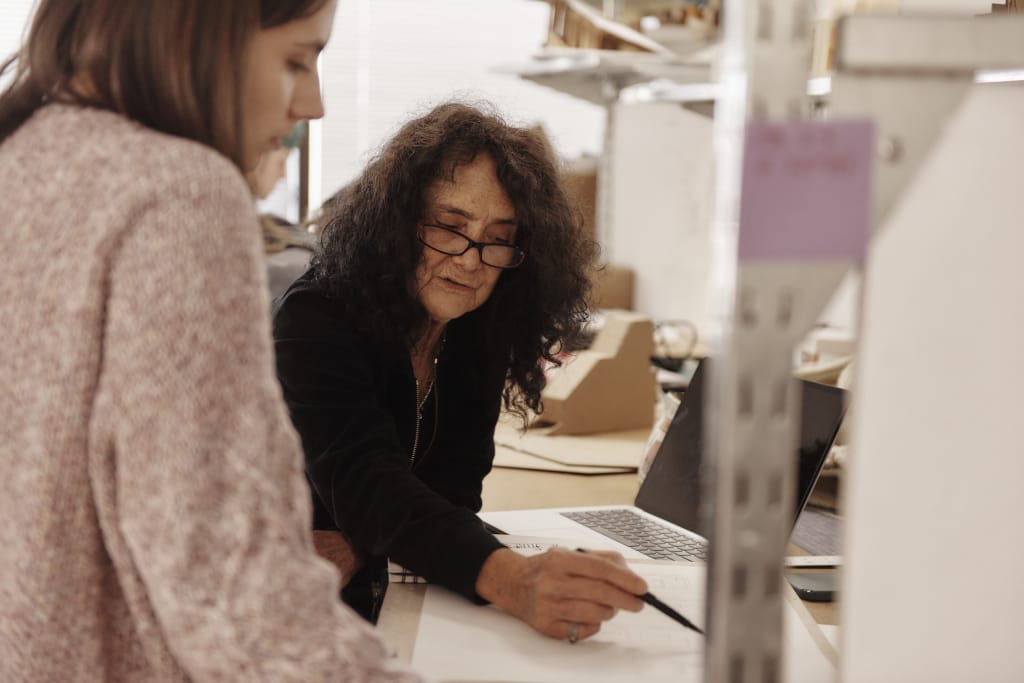Get to know our accomplished and talented Architecture faculty.

Location: On Campus (Boston)
Format: In-person, Full Time
Length of Program: 4 years
Degree Awarded: Bachelor of Fine Arts in Architecture
As an undergraduate studying Architecture at MassArt, you’ll be immersed in rich learning experiences that focus on design, fabrication, and problem solving. You’ll gain practical skills, community-based project experiences, and a deep understanding of the relationship of culture, environment, and the built world.


In coursework, students are exposed to a wide range of technical skills and tools. They dig into the nuts and bolts of the field, producing technical drawings, interpreting building codes, and outlining material specifications. They design buildings, interiors, exhibitions, and furniture – all while balancing the needs of clients and the constraints of the surrounding environment.
Our program features small class sizes and a collaborative community of undergraduate and graduate critical thinkers and designers, partnering within and across levels. At MassArt, we continue to understand architecture to be, above all, a social art. We aim to cultivate students who will engage with these departmental learning goals, build meaning within the department and studio culture, and learn to responsibly engage in their communities.
MassArt Architecture students also know the importance of understanding the broader social context of the built environment. In projects and research, they explore racial justice, social equity, accessibility, sustainability, and civic engagement as central components of architectural practice.
Students who complete the Architecture BFA program are expected to be able to demonstrate the following learning outcomes, which are necessary and part of successful entry into professional design practice.
Upon completion of the program, students are ready to work in a range of positions within architecture firms. Many graduates also continue their education by pursuing a Master of Architecture (M.Arch). Students who complete the four-year undergraduate program may enter MassArt’s M.Arch program with five additional semesters of study.
Our alumni hold positions at leading architecture firms, engineering companies, and design organizations.
Architectural Designer, Design Assistant, Draftsperson/CAD Technician, BIM Specialist, Fabrication & Model-Making Roles, Project Coordinator, Sustainability/Environmental Design Assistant.
Elkus Manfredi Architects, Howeler + Yoon Architecture, Hutker Architects, Group One Partners, Inc., Albany Housing Authority, Cinnabar, CMC Colonial Marble Company, Longfellow Design Build, R&B Design Architecture, The Architectural Team, Inc.
Architecture Firms:Shepley Bulfinch, Perkins + Will, Gensler (Boston), Goody Clancy Architects, Grimshaw, Snøhetta (NY), Kohn Pedersen Fox (KPF), Populous, Cambridge Seven Associates, Studio G Architects, Stantec (Boston), Toyo Sekkei
Engineering, Technology & Design Organizations:URS / AECOM, M+W Group, Shüco USA/NY, Broad Institute, Cameron Roberts Advisors
Architecture at MassArt is fundamentally a social art, embracing a hands-on approach to drawing and building.Paul Hajian Graduate Program Director, Architecture


Architecture students have access to multiple fabrication studios, shops, digital labs and individual studio spaces within a collaborative work environment.
Learn More